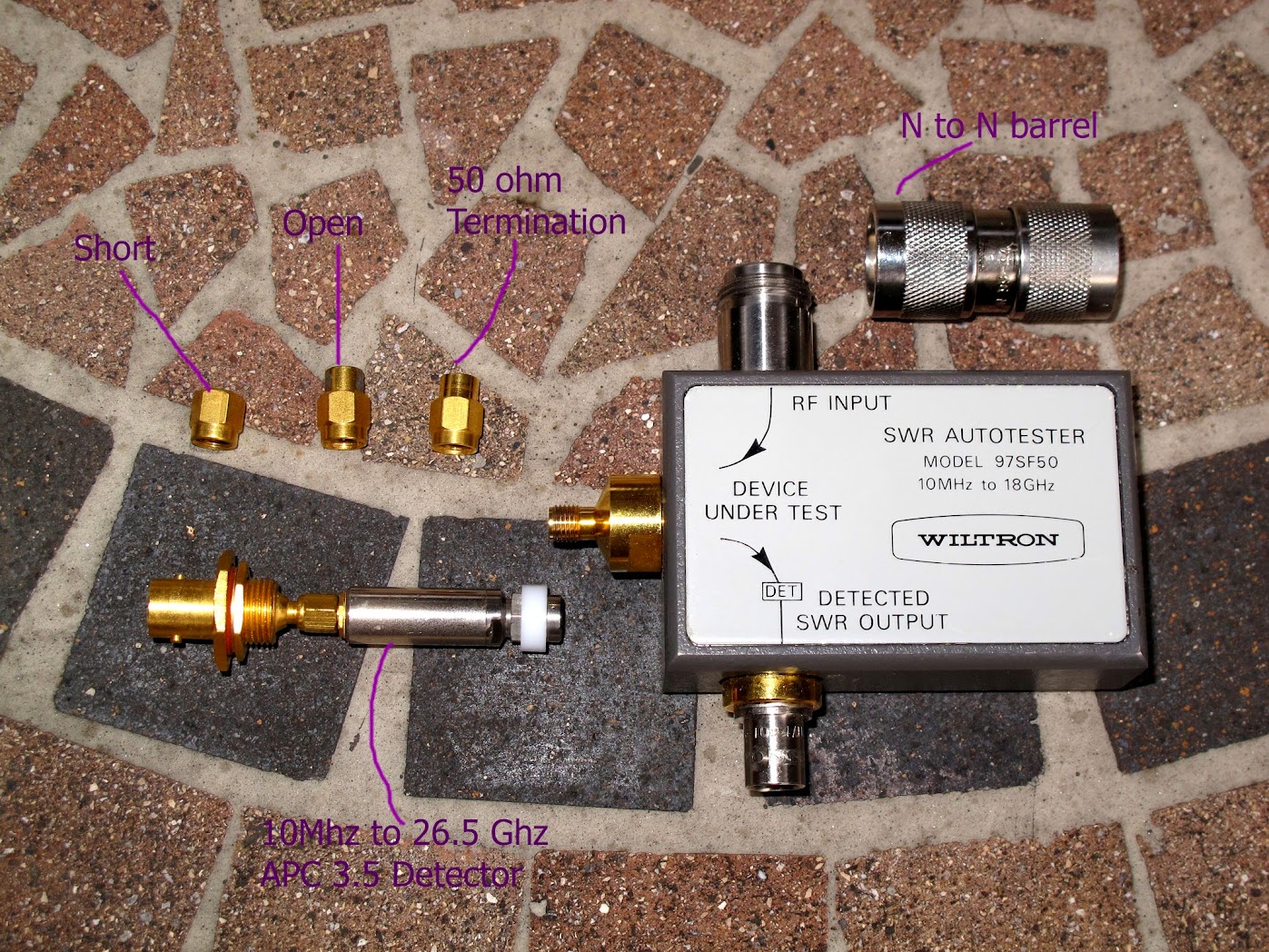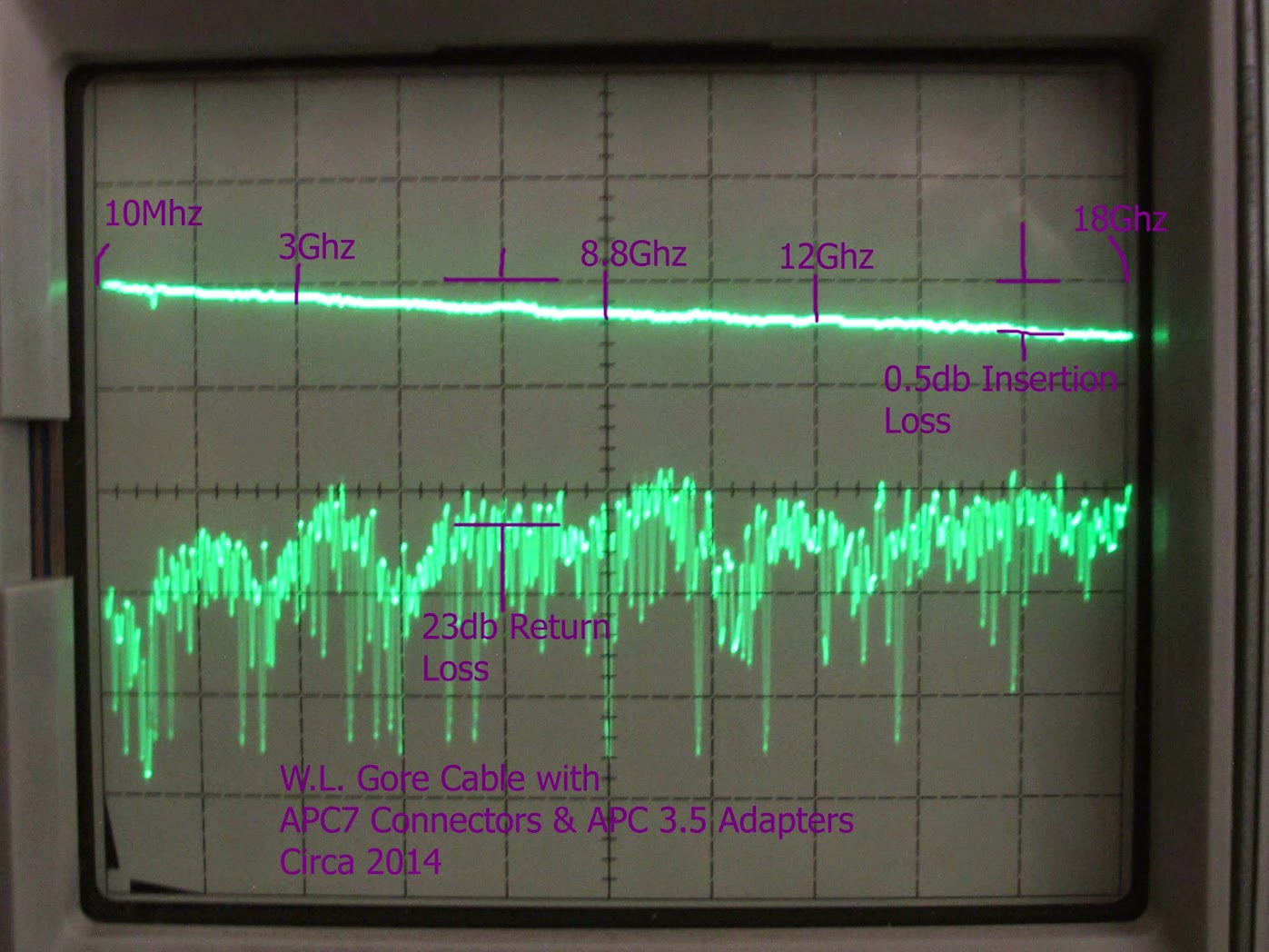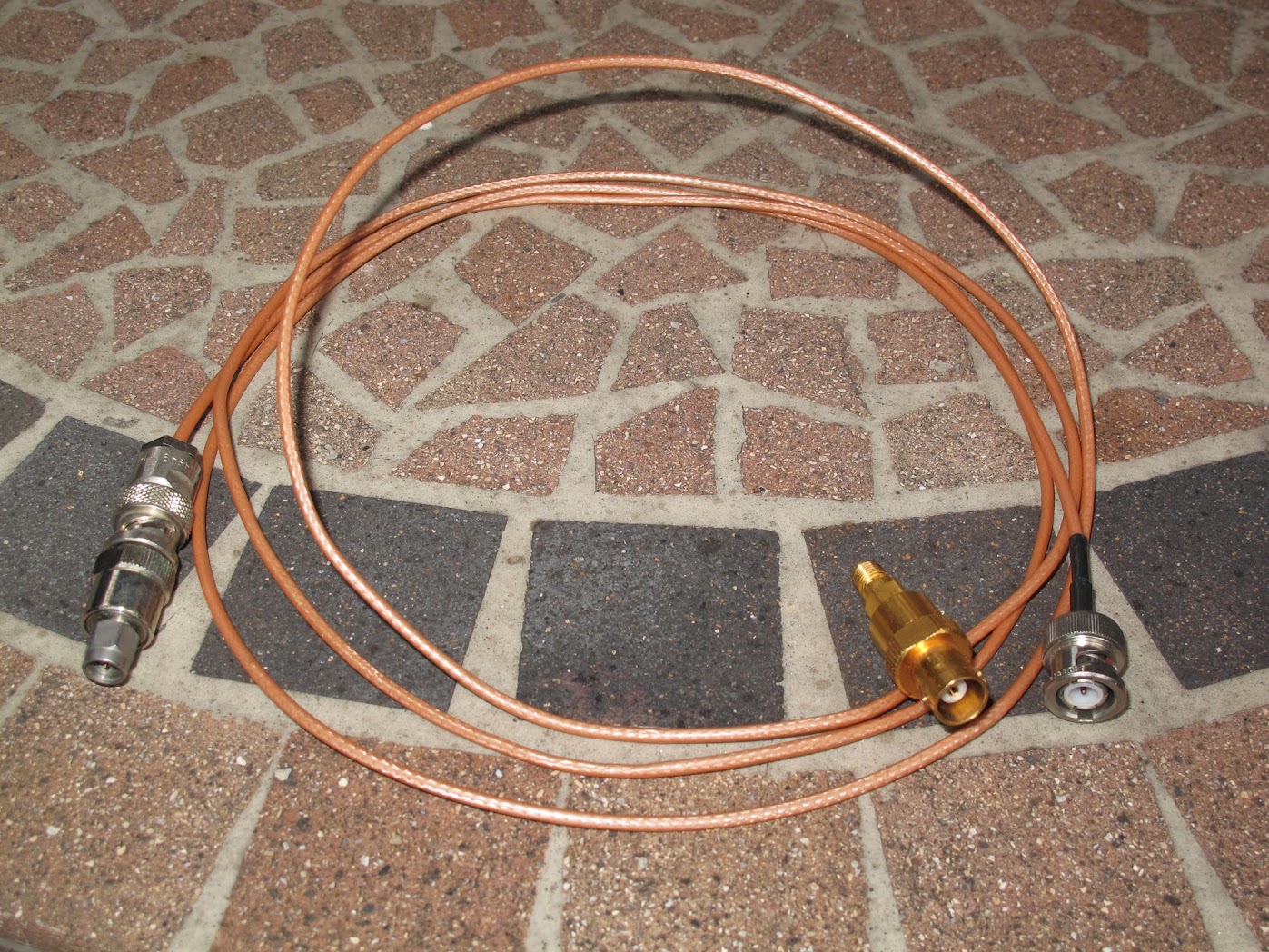Following up on the $1000 USD spectrum analyzer discussion, on page 10 mention was made of what other items are needed for care and feeding of a high performance spectrum analyzer. Beyond using a DC block & input attenuator (as required) input cables and adapters have similar importance to O'scope probes for time domain instruments. To illustrate some various coax cable examples were tested using a Wiltron 610D 10Mhz to 18.5Ghz sweep generator, 50 ohm auto tester, 560A Scaler Analyzer and required precision open, shorts, terminations and adapters.
Wiltron 10Mhz to 18Ghz with 40 db directivity Auto tester (reflectance bridge) and their related bits:

Autotester connected to the 10Mhz to 18Ghz sweep generator output with the detector connected to the test port. The DUT goes between the Autotester out and detector. Autotester measures reflected power, detector measures transmitted power.

Wiltron 560A Scaler analyzer, 0db reference set.

System return loss cal after using a precision open and short, difference subtracted and 50 termination at the Auto tester test port. This is termination measures 25db return loss at 18Ghz, not the best but it will do.

APC 3.5 Detector connected to the Auto tester test port, frequency response subtracted resulting in flat response at 1db/division. Note the return loss of this APC 3.5 detector is about 25db. The system is now ready to test cables.

The cables to be tested:
W.L. Gore cable 1.5 meters long made in the early 1980's. These were among the very first flexible coax cable that worked well up to 18.6 Ghz at a cost of $1500 USD_early 1980's. They were supplied with SMA connectors and adapters were used as required. This one has a 3.5 APC test connector & N adapter as shown in this image. For the test the N connector was not used.

Test results:
10Mhz to 18Ghz measures an insertion loss about 1db and about 15db return loss. This is a very reasonable microwave test cable to be used with a spectrum analyzer.

A current W.L.Gore test cable with APC7 connectors 1.5 meters long.

Close up of the APC7 connectors and one of the APC 3.5 adapters.

Test results:
10Mhz to 18Ghz measures an insertion loss of 0.5db and return loss about 23db. This is a GOOD microwave cable.

1 meter long Huber-Sunher Sucoflex with SMA connectors on each end.

Test results:
Good, from 10Mhz to 18Ghz insertion loss measures 0.7db and return loss about 22db.

Last a 2 meter long RG188 coax with BNC connectors. This required BNC to SMA adapters for testing in this system.

Test results:

Coax does not do well at these frequencies. The insertion loss measures 25db at 18Ghz and it is already 2.5db at 10Mhz. Return loss is OK at 10Mhz measuring about 15db, at 18Ghz, the return loss of 5db makes this coax mostly useless. Note the big dip at 7.5Ghz.
This illustrated why common coax cables and BNC connectors don't do well at higher frequencies. Knowing this is important when adding a cable to the input of a spectrum analyzer as the increasing insertion loss and return loss can significantly affect the frequency response on the spectrum analyzer display.
Bernice